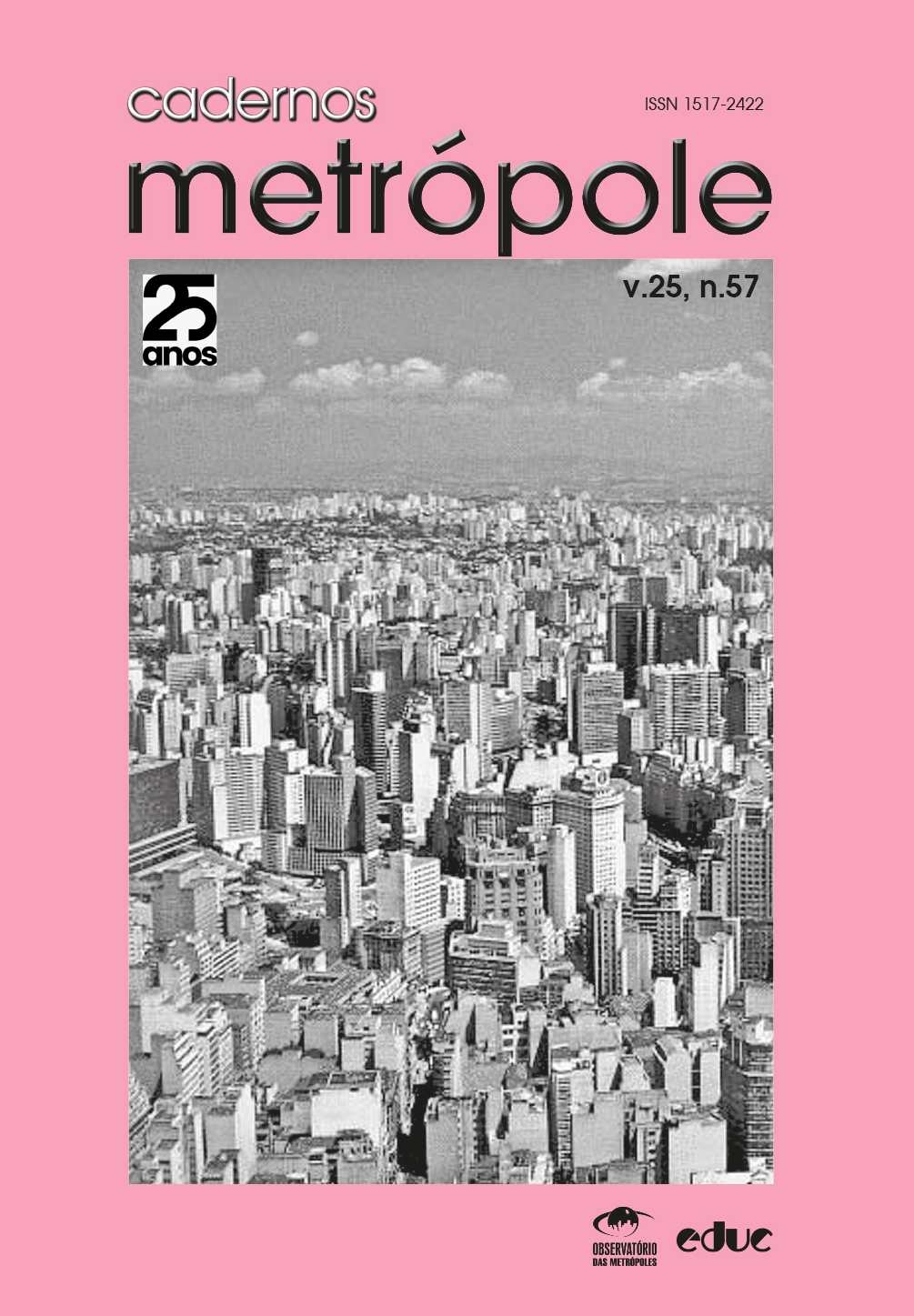Human dignity affected by environments created through digital tools
DOI:
https://doi.org/10.1590/2236-9996.2023-5707Keywords:
dignity, architecture, software, neuroscience, René DescartesAbstract
By focusing the discussion on human dignity and built spaces, this article is divided into two parts. In the first one, we present a philosophical analysis of the bases of the method and of digital tools, seeking to show how René Descartes’ metaphysical premises have been transformed into tools that submerge individualities and homogenize urban aesthetics. In the second part, we analyze neuroscientific research related to the human capacity to decide. We conclude that the built environment is an active element in the formation of such capacity. In view of this, the use of digital tools to create architectural spaces, without knowledge of their philosophical foundations and limits, may be contributing to mass society, manipulable and potentially diminished in its dignity.
References
AFONSO, C. (2019). Arquitetura e criação artística: o erro da verdade-certeza em Descartes. Dissertação de mestrado. Brasília, Universidade de Brasília.
ALBERGARIA, C. S. (2022). O reconhecimento do desenho como desígnio na arquitetura à luz da psique. Dissertação de mestrado. Brasília, Universidade de Brasília.
AQUINO, T. (2007). Quaestiones disputatae de veritate proemium et art. 1. Disponível em: www.aquinate.com.br: http://www.corpusthomisticum.org/qdv01.html. Acesso em: jun 2019.
BRUNSCHVICG, L. (1993). Les étapes de la philosophie mathématique. Paris, Librairie scientifique et technique Albert Blanchard.
CHATTERJEE, A.; VARTANIAN, O. (2014). Neuroaesthetics. Trends in Cognitive Sciences, v. 18, n. 7, pp. 370-375. DOI: http://dx.doi.org/10.1016/j.tics.2014.03.003.
CINZA, D.; VITTORIO, G. (2009). Neuroaesthetics: a review. Current Opinion in Neurobiology, v. 19, pp. 682-687. DOI: 10.1016/j.conb.2009.09.001.
COBURN, A.; VARTANIAN, O.; CHATTERJEE, A. (2017). Buildings, beauty, and the brain: a neuroscience of architectural experience. Journal of Cognitive Neuroscience, v. 29, n. 2, pp. 1521-1531. DOI:10.1162/jocn_a_01146.
COBURN, A.; VARTANIAN, O.; KENETT, Y. N.; NADAL, M.; HARTUNG, F.; HAYN-LEICHSENRING, G.; CHATTERJEE, A. (2020). Psychological and neural responses to architectural interiors. Cortex, v. 126, pp. 217-241. DOI: http://doi.org/10.1016/j.cortex.2020.01.009.
COUTINHO, L. (2021). Educação arquitetônica da humanidade. Brasília, Tanto Mar.
DAMASIO, A. (2012). O erro de Descartes: emoção, razão e o cérebro humano. São Paulo, Companhia das Letras.
______ (2018). A estranha ordem das coisas: as origens dos sentimentos e da cultura. São Paulo, Companhia das Letras.
DESCARTES, R. (2009). O mundo (ou tratado da luz) e o homem. Campinas, Unicamp.
______ (2015). Meditações metafísicas. São Paulo, Folha de S.Paulo.
______ (2018). Selected Correspondence of Descartes, in the version by Jonathan Bennett presented at www.earlymoderntexts.com. Some texts from early modern philosophy. Disponível em: http://www.earlymoderntexts.com/authors/descartes. Acesso em: 12 set 2019.
DURAND, J. (1805). Precis des leçons d'architecture (second volume). Paris, Ecole Polytechnique.
FRIAS, L.; LOPES, N. (2015). Considerações sobre o conceito de dignidade humana. Revista Direito GV 22. São Paulo, v. 11, n. 2, pp. 649-670.
FRIEDMAN, M. (2011). “Descartes e Galileu: copernicianismo e o fundamento metafísico da física”. In: BROUGHTON, J.; CARRIERO, J. Descartes. Porto Alegre, Penso.
GAUKROGER, S. (2011). “Vida e obra”. In: BROUGHTON, J.; CARRIERO, J. Descartes. Porto Alegre, Penso.
ISHIZU, T.; ZEKI, S. (2011). Toward a brain-based theory of beauty. Plos ONE, v. 6, n.7, pp. 1-10.
KOWARICK, L. (2013). Cortiços: a humilhação e a subalternidade. Tempo Social [online], v. 25, n. 2 pp. 49-77. Disponível em: DOI https://doi.org/10.1590/S0103-20702013000200004. Acesso em: 9 nov 2022.
KRUFT, H. W. (1994). A history of architectural theory: from Vitruvius to the present. Nova York, Princeton Architectural Press.
LANOUETTE, W. (2013). Genius in the shadows. Nova York, Skyhorse Publishing.
LEDOUX, J. E.; DAMASIO, A. R. (2014). “Emoções e sentimentos”. In KANDEL,: E. R.; SCHWARTZ, J. H.; JESSEL, T. M.; SIEGELBAUM, S. A.; HUDSPETH, A. J. Princípios de Neurociências. Porto Alegre, AMGH, pp. 938-951.
ONU (1948). Declaração Universal dos Direitos Humanos (resolução 217 A III). Nova York.
SCHERER, K. R. (1994). “Emotions serves to decouple stimulus and response”. In: EKMAN, P.; DAVIDSON, R. J. The nature of emotion. Nova York, Oxford University Press, pp. 127-130.
ULRICH, R. S. (1983). Aesthetic and affective response to natural envinonment. Human Behavior & Environment: Advances in Theory & Research, n. 6, pp. 85-125.
VARTANIAN, O.; NAVARRETE, G.; CHATTERJEE, A.; BRORSON FICH, L.; LEDER, H.; MODRONO, C.; NADAL, M.; ROSTRUP, N.; SKOV, M. (2013). Impact of contour on aesthetics judgement and approach-avoidance decisions in architecture. Proceedings of the National Academy of Sciences of the United States of America, 110 (Supplement 2). Disponível em: https://doi.org/10.1073/pnas.1301227110.
VITRUVIUS, P. (2007). Tratado de Arquitetura/ VItrúvio. São Paulo, Martins Fontes.
ZEKI, S. (1998). Art and the Brain. Daedalus, pp. 71-103.
______ (2001). Creativity and the Brain. Science, v. 293, pp. 51-52.
Downloads
Published
How to Cite
Issue
Section
License
Copyright (c) 2023 Claudia Afonso

This work is licensed under a Creative Commons Attribution-NonCommercial-NoDerivatives 4.0 International License.
A revista não tem condições de pagar direitos autorais nem de distribuir separatas.
O Instrumento Particular de Autorização e Cessão de Direitos Autorais, datado e assinado pelo(s) autor(es), deve ser transferido no passo 4 da submissão (Transferência de Documentos Suplementares). Em caso de dúvida consulte o Manual de Submissão pelo Autor.
O conteúdo do texto é de responsabilidade do(s) autor(es).


